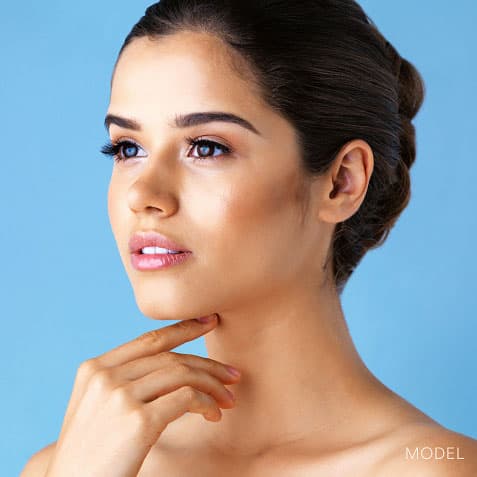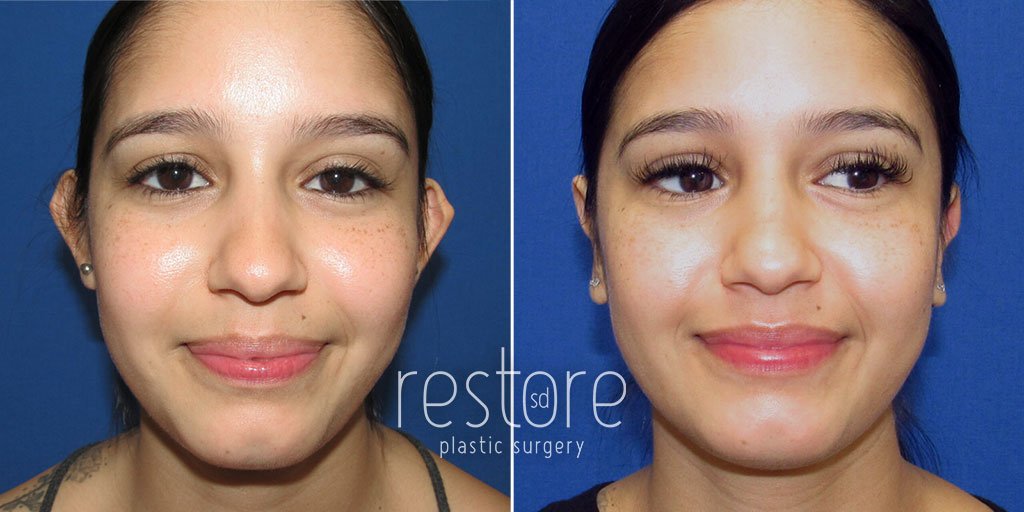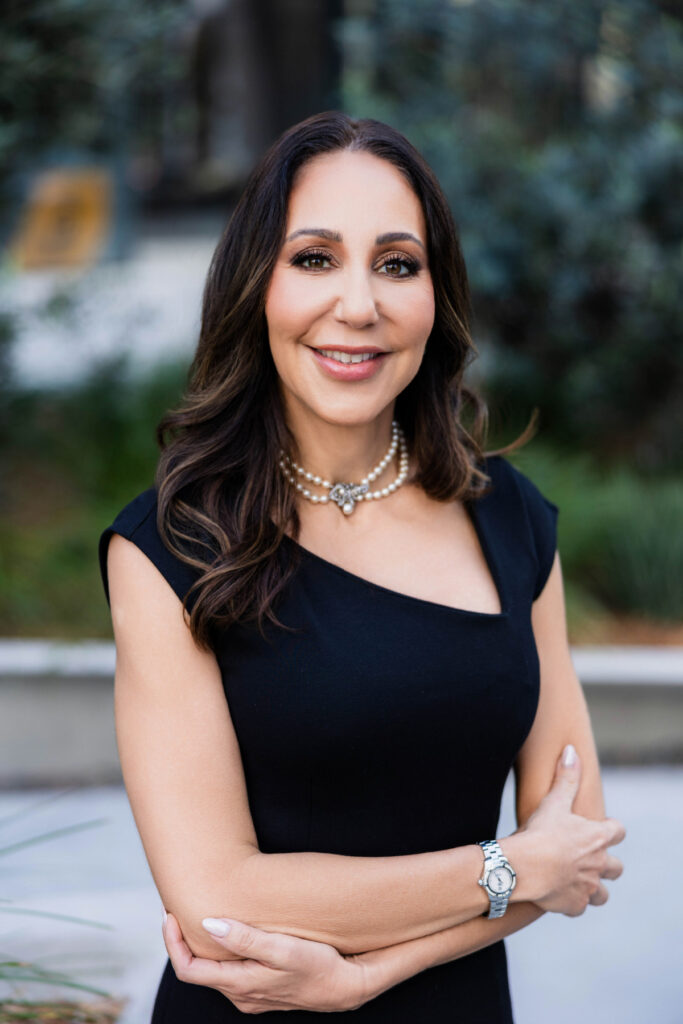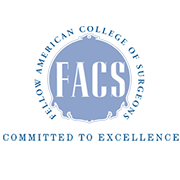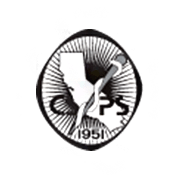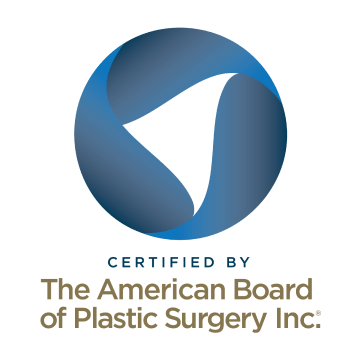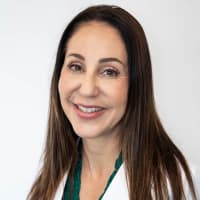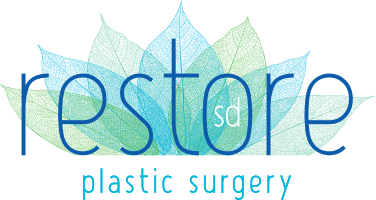Prominent Ear Surgery (Otoplasty) San Diego
Enhance facial balance and reduce ear prominence with otoplasty from our board-certified plastic surgeon Dr. Katerina Gallus. Learn how a customized plan for ear surgery in San Diego and La Jolla can create natural-looking results with minimal downtime.
Am I a Candidate for Prominent Ear Surgery (Otoplasty)?
- Have prominent ears that protrude further than normal dimensions
- Are self conscious about how your ears look or are teased by others
- Are motivated to improve your ear appearance through surgical intervention
- Are able to refrain from vigorous contact sports for 6-8 weeks after surgery
- Are a healthy non-smoker and not taking any blood thinner medications

“Everyone at Restore was so helpful and friendly ! We felt really comfortable making a surgery decision for our daughter. Dr Gallus is incredibly skilled and kind!”
—Google Review for Dr. Gallus
With over 20 years of experience, Dr. Gallus is a board certified plastic surgeon and Castle Connolly Top Doctor. She will partner with you to develop a tailored surgical plan that prioritizes your safety and results.
Prominent Ear Surgery Options
Prominent ears are quite common and can be due to lack of a natural fold of the upper ear or an excess of cartilage at the base of the ear – or a combination of both factors. Your Restore SD surgeon will perform a thorough examination and discuss a comprehensive surgical plan that addresses your individual goals. In some cases, only the upper ear fold needs to be created while in others, only the cartilage reduction at the base of the ear needs to be done. Sometimes both areas need to be addressed surgically.
Otoplasty Procedure: What to Expect
Prominent ears are corrected under general anesthesia in a hospital or accredited ambulatory surgery center. The surgery generally takes about 2 to 3 hours and is an outpatient procedure. Incisions are made behind the ear and corrective sutures are placed to create an upper ear fold. If the base of the ear is involved, a small amount of cartilage may be removed to allow the ear to rotate back into a less prominent position. Sutures are then placed to hold the ear in the correct position. Absorbable sutures are then placed to close the skin and a compression dressing is placed.
Introducing Pro-Nox: Patient Controlled Pain Management
Your comfort is our top priority at Restore SD Plastic Surgery, so we perform your otoplasty in a calming environment and provide you with utmost care. We also offer Pro-Nox, a patient-controlled pain management system that allows you to administer your own pain relief. Learn more about Pro-Nox here»

Recovery After Otoplasty
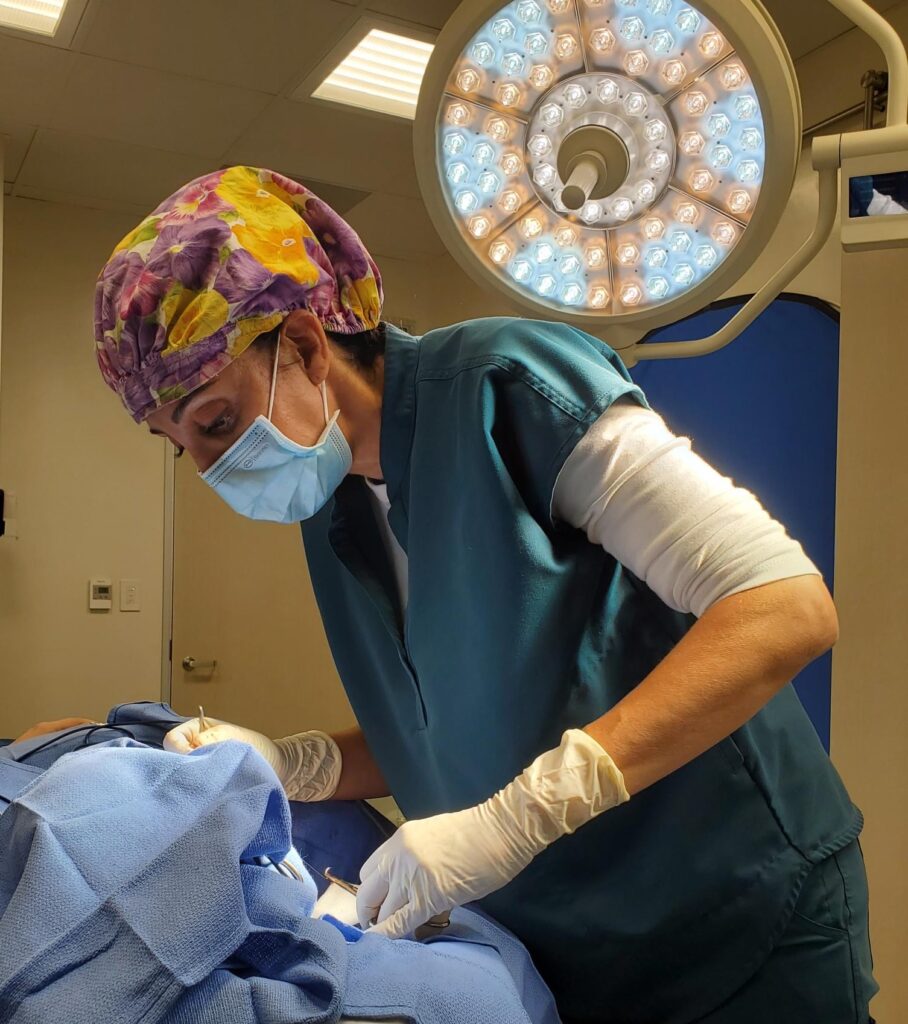
After you recover from anesthesia you will be able to go home with a responsible adult. Ideally this loved-one or friend can stay with you for a day or two after surgery and drive you to your early follow up appointments. You will have a dressing that will be removed by the Restore SD team when you return for follow up within 24-48 hours. Some surgical pain is expected and you will be prescribed pain medication to help keep you comfortable during the recovery process. You will need to wear a headband for a few weeks after surgery to keep the ears in correct position during healing. Some of our patients have gotten very creative with their headwear!
Normal daily activities like showering, eating and light activity such as walking can be resumed within 24 hours after surgery. Some post-operative swelling is normal and generally resolves within the first 6 weeks after surgery. You should refrain from intense physical activity for 6-8 weeks and contact sports are not allowed during the healing process. During the recovery period, you will have follow-up with your Restore SD surgeon and will be guided back to your usual activities. Most complications occur from getting too active too early, so select a surgical date that allows an appropriate amount of time to heal and gradually return to your more vigorous activities.
Combined Procedures for Prominent Ear Surgery
Correction of prominent ears is generally performed as a stand-alone procedure but can be safely combined with breast surgery, some body contouring procedures, facial rejuvenation procedures, and even liposuction. Your Restore SD surgeon will listen closely to your goals and partner with you to develop an individualized surgical plan that optimizes your results and safety.
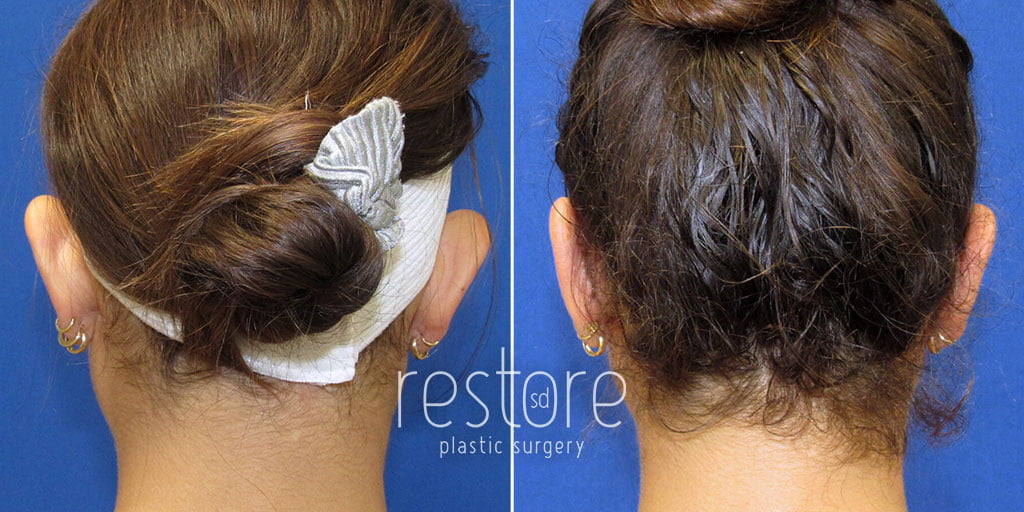

“Dr. Gallus and her team at restore are incredibly professional and caring. They make you feel comfortable from the first time you set foot in their beautiful office. My results from my procedure were exactly what I expected. I believe having a woman plastic surgeon like Dr. Gallus is key to getting the results you want. If you are looking for a great surgeon, I highly recommend Dr. Gallus. Thank you Restore!”
—Actual patient of Dr. Gallus
Otoplasty Videos
Biggest Fears About Anesthesia
Before You Book: What to Expect During a Plastic Surgery Consultation
How to Recover Like a Celebrity After Plastic Surgery
Dr. Gallus and Dr. Greer discuss the ear – how to correct common ear lobe concerns and the basics of the surgery for prominent ears. “Hear” about what is new and what is tried and true on this session!
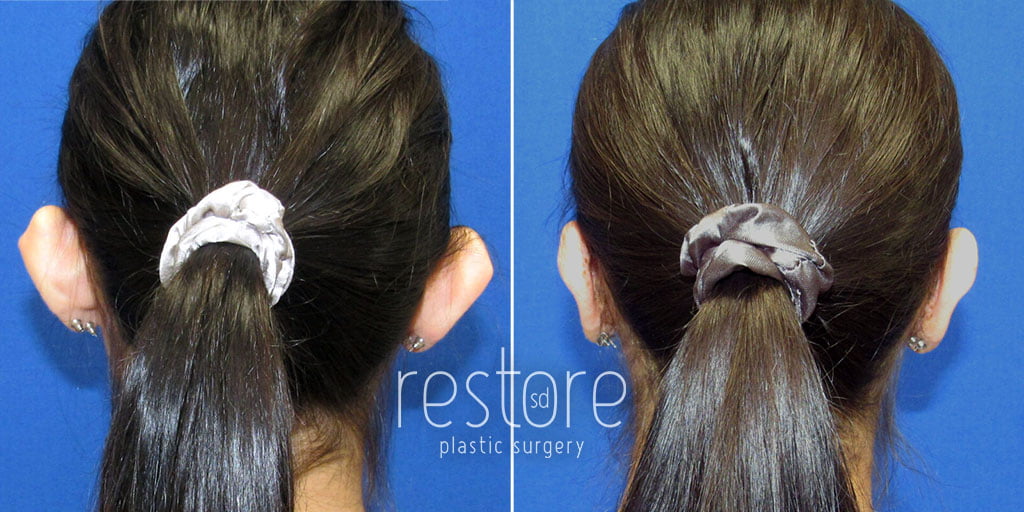
Prominent Ear Surgery FAQs
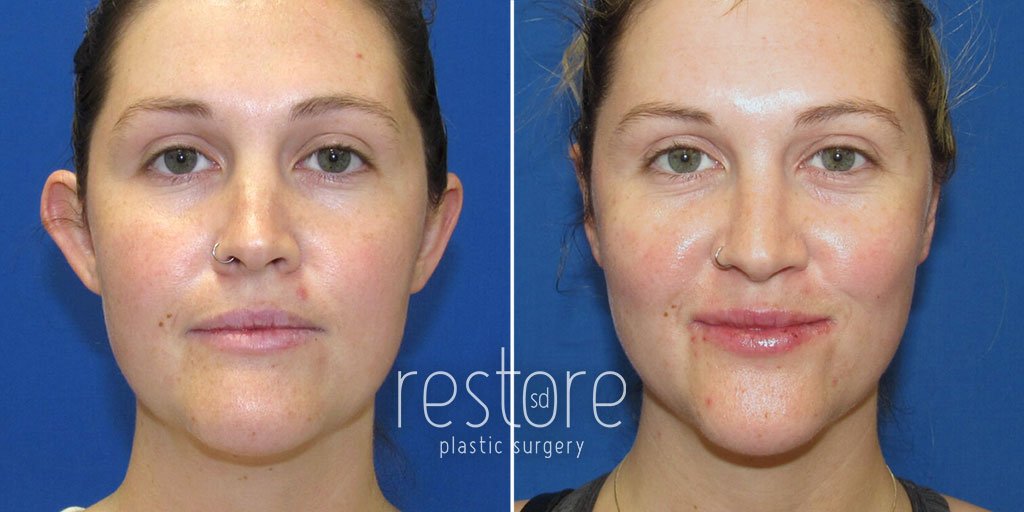
- Key Benefits
- Glossary
- Corrects ear shape, position, or proportion for a more balanced facial appearance
- Allows for a quick recovery, as most patients resuming normal activities within a week.
- Minimal scarring with incisions that are well-concealed within the natural creases of the skin
- Permanent results that age well over time
- Anesthesia: Medications used to prevent pain and alter consciousness during surgery; can be local, regional, or general.
- Antihelix: The inner ridge of the ear’s cartilage, parallel to the helix.
- Auricle (Pinna): The external part of the ear that is visible on the side of the head.
- Cartilage: A firm, yet flexible connective tissue found in the ear.
- Conchal Cartilage: The main cartilage of the ear that forms the back part of the ear bowl.
- Helix: The outer rim of the ear.
- Incision: A surgical cut made during procedures. In otoplasty, incisions are typically placed behind the ear to minimize visible scarring.
- Lobule: The lower, fleshy part of the ear that can be adjusted or resized during otoplasty.
- Otoplasty: A surgical procedure to alter the shape, size, or position of the ears, commonly known as ear pinning.
- Postoperative Care: Care and instructions followed after surgery to ensure a smooth recovery, including wound care and activity restrictions.
- Recovery Time: The period required for healing after surgery. For otoplasty, patients often return to normal activities within a week, with full healing taking several weeks.
- Revision Otoplasty: A subsequent surgery performed to correct or improve the results of an initial otoplasty.
- Scapha: The hollow or depression between the inner and outer ridges of the ear.
- Sutures: Stitches used to close wounds or surgical incisions.
- Symmetry: The goal of making both ears look uniform in appearance through surgery.
Your Safety = Beautiful Results
Ear Surgery at Restore SD
At Restore SD Plastic Surgery, patient safety comes first. Board-certified plastic surgeon and former Navy plastic surgeon Dr. Katerina Gallus operates in a private, on-site Quad A-accredited surgery center, with state-of-the-art equipment and LED surgical lighting. She proudly works with a board-certified anesthesiologist and holds privileges at Scripps Memorial Hospital La Jolla.
Choose female plastic surgeon Dr. Katerina Gallus for your prominent ear surgery in San Diego
Katerina Gallus, MD is a female cosmetic plastic surgeon who is board certified by The American Board of Plastic Surgery (ABPS). With over 20 years of experience as a plastic and reconstructive surgeon, Dr. Gallus has the skills and expertise to develop a safe surgical plan that achieves your desired results. To schedule your consultation, call 858-224-2281 or contact us online.
Call to schedule your consultation today »
References »
Naumann A. Otoplasty – techniques, characteristics and risks. GMS Curr Top Otorhinolaryngol Head Neck Surg. 2007;6:Doc04. Epub 2008 Mar 14. PMID: 22073080; PMCID: PMC3199845.
Ordon A, Wolfswinkel E, Shauly O, Gould DJ. Aesthetic Otoplasty: Principles, Techniques and an Integrated Approach to Patient-Centric Outcomes. Aesthetic Plastic Surgery. 2019 Oct;43(5):1214-1225. doi: 10.1007/s00266-019-01441-2.
Stewart KJ, Lancerotto L. Surgical Otoplasty: An Evidence-Based Approach to Prominent Ears Correction. Facial Plastic Surgery Clinics of North America. 2018 Feb;26(1):9-18. doi: 10.1016/j.fsc.2017.09.002.
Hoshal SG, Morisada MV, Tollefson TT. Reducing Surgical Risks for Otoplasty. Facial Plastic Surgery Clinics of North America. 2023 May;31(2):253-261. doi: 10.1016/j.fsc.2023.01.011.
Handler EB, Song T, Shih C. Complications of otoplasty. Facial Plastic Surgery Clinics of North America. 2013 Nov;21(4):653-62. doi: 10.1016/j.fsc.2013.08.001.
Medically reviewed by Dr. Katerina Gallus — Updated on Oct 28, 2025
Learn more about ear surgery in San Diego
 Podcast: 8 Things We’d Never Do at Our San Diego Plastic Surgery Practice
Podcast: 8 Things We’d Never Do at Our San Diego Plastic Surgery Practice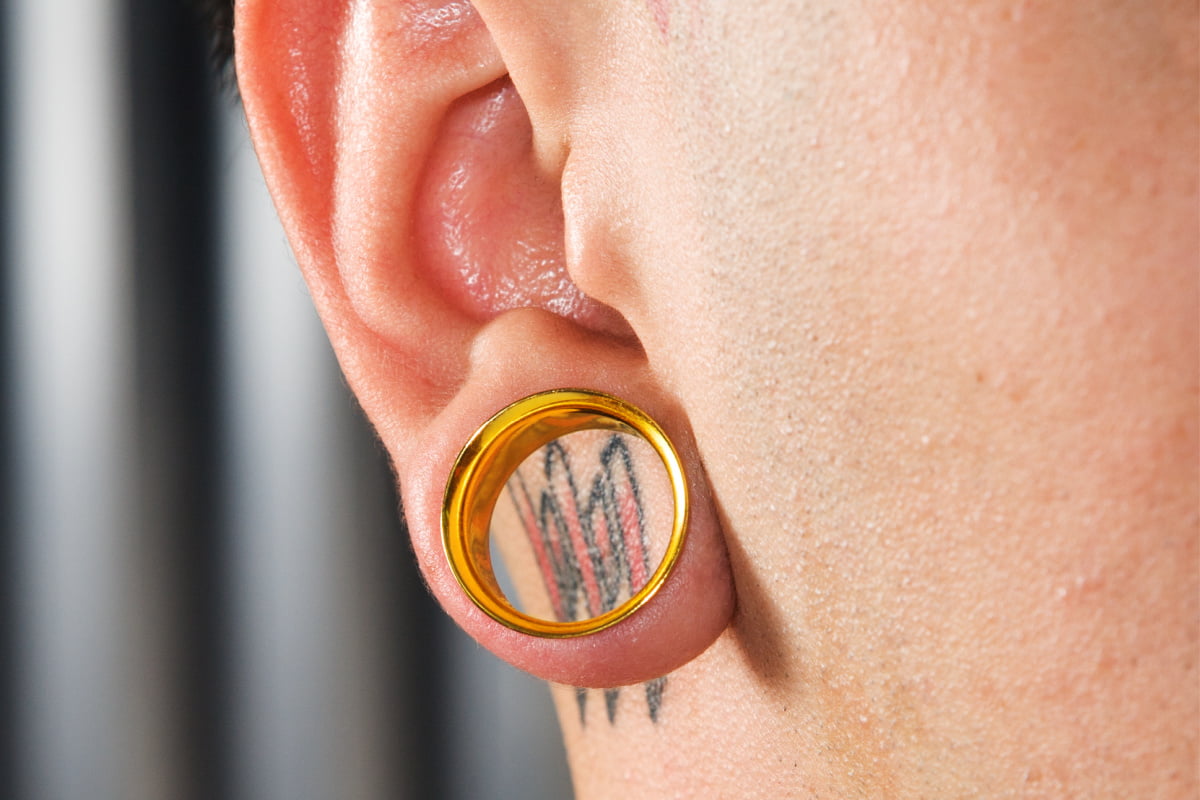 5 Facts About Earlobe Surgery
5 Facts About Earlobe Surgery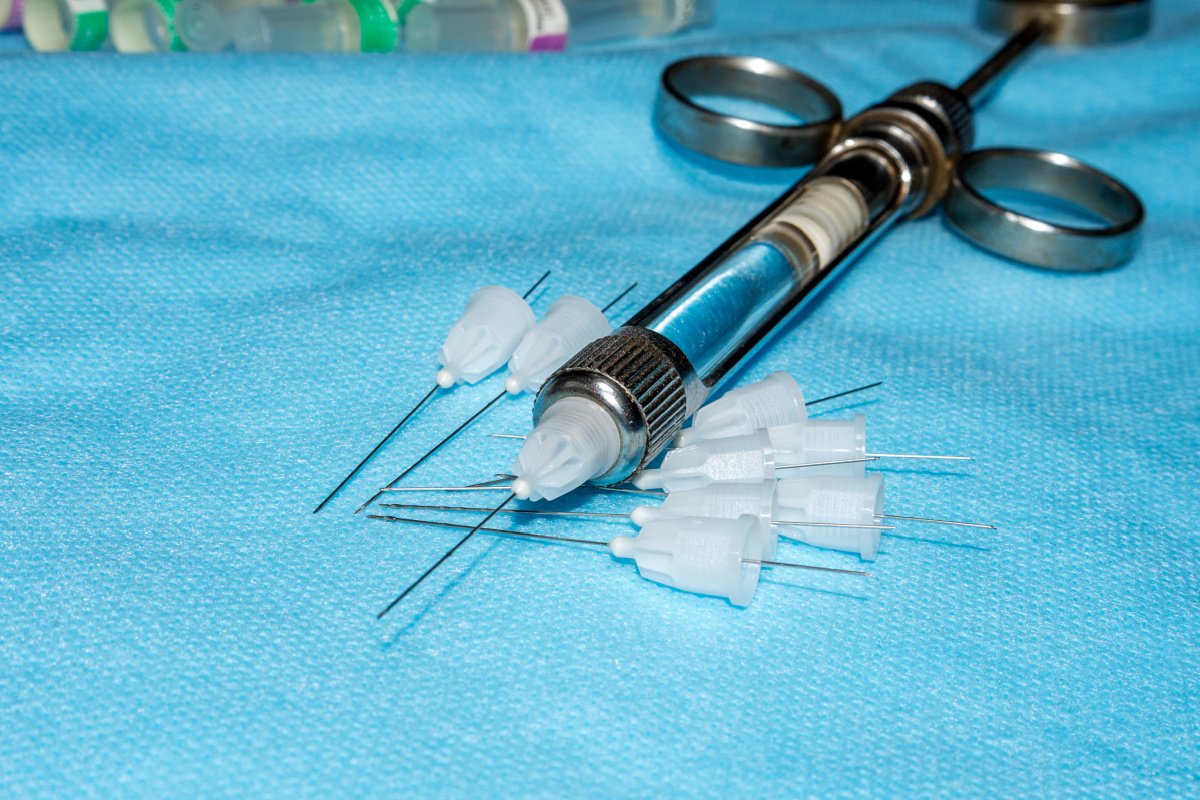 4 Surprising Plastic Surgeries That Can Be Done Under Local Anesthesia
4 Surprising Plastic Surgeries That Can Be Done Under Local Anesthesia

